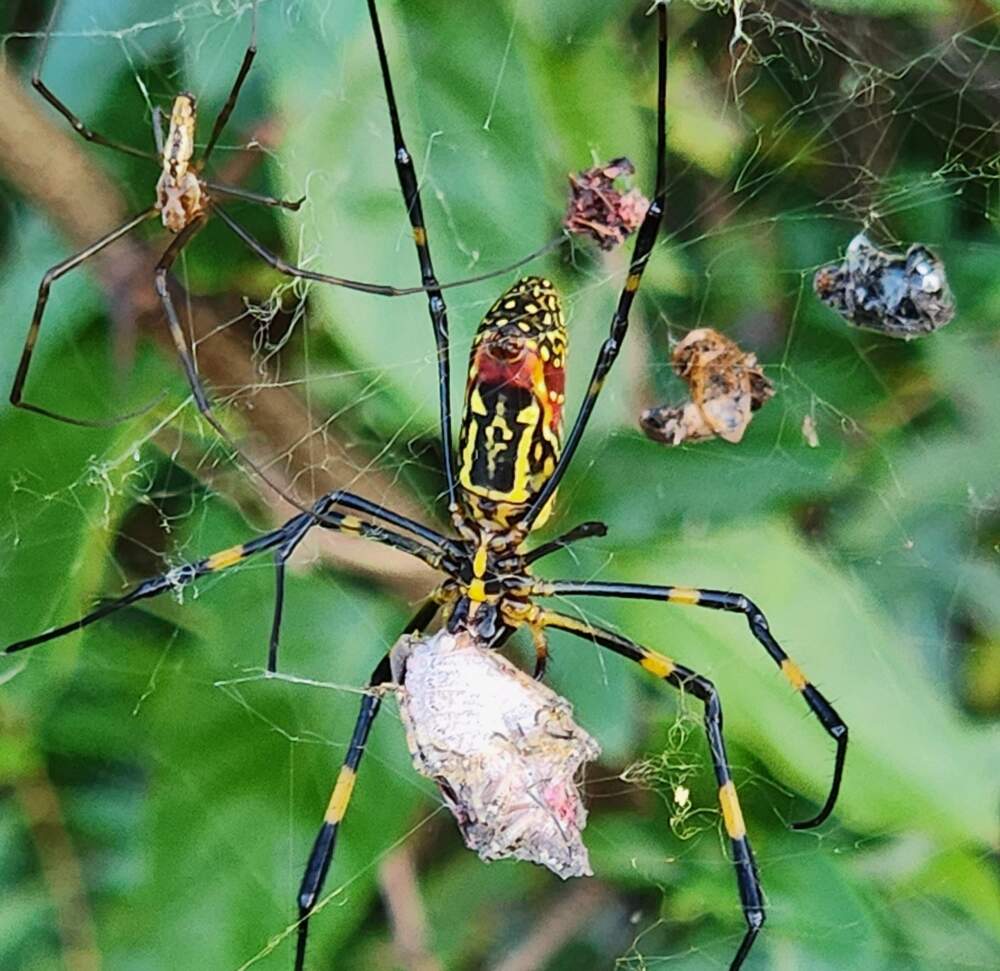Advertisement
How Boston's first Joro spider likely got here — and why you shouldn't freak out
The Joro spider has officially shipped up to Boston.
The palm-sized, neon-yellow spider from Southeast Asia was first spotted weaving its signature web by a photographer on Beacon Hill this month. Experts say this is the northernmost confirmed sighting of a Joro spider in the U.S.

Scientists believe the species first arrived to the southeast U.S. about a decade ago by way of shipping container. The spider likely made its way to Boston when a female spider laid an egg sack on something transported to the area. And that means, the one seen in Beacon Hill is probably not alone, according to Ecologist Benjamin Frick, who studies Joros at the University of Georgia in Athens.
"It's probably pretty likely that if you did see one spider and it made it to adulthood, then others probably did as well. The likelihood of it just being one [Joro spider] is probably pretty low," Frick said.
But don't panic. Though Joro spiders are technically venomous, the "Nerf footballs with legs," as Frick refers to them, are considered harmless to humans and pets.
The likelihood of it just being one [Joro spider] is probably pretty low.
Benjamin Frick, an ecologist at the University of Georgia in Athens
"They do possess the capability to bite you. However, they're going to run away from you at every opportunity they possibly can. They're very timid spiders," said Frick.
While sometimes referred to as "flying spiders," Joros do not have wings. Instead, their population often spreads when wind carries rice grain-sized hatchlings on webs. Experts believe this method of travel only carries the baby spiders about a mile.
Frick said most people are not likely to notice the hatchlings as they balloon around: "So, if a spider landed on you, not only would you not notice it. But you would also probably accidentally kill the baby spider just by like scratching your head."
Joros are known as a type of orb weaver spider. They are often found on their classic wheel-shaped webs, which can be up to 10 feet wide and are often found in open areas, like along power lines and under tree canopies.
Advertisement
So far, experts have not seen any evidence Joro spiders are affecting native spider or insect populations in the U.S.
"They're like any other spider, if you just leave them there, they're going to do what any other spider normally does and catch insects," Frick said. "And if you want fewer insects, then the spiders are friends."
